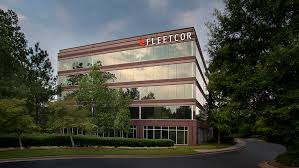This Under-the-Radar Company Has Been Aggressively Buying Up Businesses — and It’s Working

You probably haven’t heard of Fleetcor Technologies.
Fleetcor is a Norcross, Ga.-based payments solutions provider focused on B2B services like accounts payable, cross-border payments, and payments cards for niche industries. Not exactly the sexiest company in the world.
But what is quite interesting is Fleetcor’s acquisition strategy. Since the company’s inception in 2000, it has completed 76 acquisitions — deploying $ 8.2 billion in total. Some of its larger deals involve its purchase of fuel card provider Comdata for $ 3.45 billion and electronic toll payments company STP/Sem Parar for $ 1.1 billion.
On average, Fleetcor has doubled targets’ EBITDA within two years of ownership, making M&A a major part of the company’s growth. As a result, Fleetcor’s own revenue has increased 6x and its market cap has grown 800% to approximately $ 18 billion.
These results are surprising as they defy industry data, which often shows that M&A does not deliver value. As the Harvard Business Review put it, “M&A is a mug’s game, in which typically 70%–90% of acquisitions are abysmal failures.”
So what gives? Term Sheet spoke with John Coughlin, the head of Fleetcor’s M&A team, about Fleetcor’s aggressive strategy, how it evaluates acquisition targets, and whether blockchain could upend the payments business as we know it.
On a related note, Andrew Left, founder of short-seller firm Citron Research, went short on Fleetcor last year, taking aim at the company’s high fees. Fleetcor has said that there’s no merit to his allegations.
TERM SHEET: What types of companies do you buy, and how do you evaluate potential acquisition targets?
COUGHLIN: We stick to what we know, which is B2B payments. In this business, there’s a big technology component, but at the end of the day, revenue and growth come from selling more businesses to get on our products. So we stick to that model.
The things we look for are similar business model characteristics. When I was in business school, one of the best things I ever learned was that your returns in a business are determined more by the asset class you’re buying than the specific company you’re buying. So it’s more important that you’re in beverages than picking Coke or Pepsi. We feel that way about payments. Payments is a great industry. It has elements to it like recurring revenue, low capital expenditures, high margins, a network element that feeds on itself, and it’s driven by selling.
Most importantly, we will never buy a company unless we have a clear thesis on how we will double the profits in a short period of time, which is three to four years.
This article originally ran in Term Sheet, Fortune’s newsletter about deals and dealmakers. Sign up here.
What are first things you do once you acquire a company?
COUGHLIN: The lever we pull most often when we buy a company is distribution. The most common theme we see in companies is that they grossly under-invest in sales. One of the first things we do is we invest more in sales to grow the top line. We’ll only invest if we find the selling system that exists today is efficient, ie: for every dollar you spend on sales, you get a good return. But also, we look at whether they’re using modern selling techniques. I can’t tell you what percentage of companies we look at are still using the same selling techniques from 20 years ago. If you sell more, you grow fast, and profit will follow.
The second is segmenting the hell out of the business and understanding what drives profitability. At the end of the day, the 80/20 principle applies. Eighty percent of a business’s profit will typically only come from 20% of its customers or 20% of its activity. What we try to do is figure out what’s the 20% that really makes the money, and how do we do more of that? And if there’s 80% of the work is not pulling its weight, how do we change that dynamic? We either change the business model or just stop doing it and re-allocate those costs and resources to try and do more of the 20%. I think a lot of businesses forget that they’re in business to do nothing other than create a profit. Sure, you want to create an institution and serve your customers well, but the objective function is profit. And we’re not big fans of a lot of work without profit associated with it.
And third is figuring out whether we can change the business model. We’ve done 76 deals in the history of the company, and we’ve done them in a bunch of different categories and geographies. When you do that, you see the same types of problems a lot. So we try to take the things we’ve learned in the past and see if we can change the business model. A lot of times, we’re seeing great assets that might be run by a founder who’s just doing the same thing he’s done forever and can’t take it to the next level.
Once we identify what we’ll do, someone from our team who’s been involved with the deal has to go do it. They’ll go sit in the business for six to nine months, and they’ll bring them up to speed on what we found, what we think we should do, and how to implement it.
Since the company’s IPO in 2010, the company has made 32 acquisitions. What’s been the driving factor behind this aggressive M&A strategy?
COUGHLIN: The reason we’re doing it is that we want to scale an existing position and we want to enter important geographies because we’re very focused on our global expansion. Today, the U.S., the U.K., and Brazil are 90% of our company. We want to get into the top 20 countries that make up the bulk of global GDP.
We’re in a hurry. We want to grow quickly, create meaningful market positions quickly, and create shareholder value quickly. We always had this aspiration to be the one of the biggest and most admired payments companies in the world, and now, we’ve got a shot at it.
How many deals do you plan to do in 2018?
COUGHLIN: We’re averaged four to five a year. We think of it more as capital deployed, so our goal is to deploy $ 1 billion of capital a year, which is approximately our annual cash flow. And we’ve done that in the three out of the last four years.
What do you look at to determine whether a company is overvalued?
COUGHLIN: We’re less concerned with what the company is and more concerned with what it can be. But of course, you never want to overpay. We’re a company that’s valued on net income, on a P/E basis. I think that’s the best metric to look at in determining valuation because unlike EBITDA, net income reflects a business’ capital intensity (manifested in depreciation) and tax rate which can vary greatly by country.
Too many people in this industry get focused on EBITDA as the metric. It’s 100% the wrong metric. It’s just not a proxy for cash flow. And I think the bankers of the world have just pushed that metric to pull the wool over people’s eyes. We look at cash net income.
One of your companies, Cambridge Global Payments, recently partnered with Ripple, the open payment network behind the cryptocurrency XRP. What are some takeaways from that pilot program so far?
COUGHLIN: It’s too early to say. But I think it’s a logical partner for the business. Cambridge is a cross-border payments company, and that involves forward exchange rates and delivering the money. One of the things about delivering money globally is that it’s sort of a broken system. It takes days and it’s really hard to track where the money is at any one point. And this is in a world of electronic money transfers. Why do I have to go through three branks to send money from the U.S. to Brazil? It’s just crazy. So any different way or pipe to get it there through a lower cost is interesting to us.
Do you think that blockchain technology could entirely upend the global payments system?
COUGHLIN: Again, I think it’s too early to say. As an individual, I’m suspicious of the value being distributed to currencies like Bitcoin. I think that’s a bubble. I don’t think there’s real basis for the valuation. I’m a little skeptical on that, but that’s separate from the efficacy of the mechanism. I think blockchain is a very interesting technology. It makes a lot of sense, and it has broad applications. But as a payments company, blockchain doesn’t really change at all the need to sell, underwrite, and lend to the customer. And that’s where the real value lies.
What are some trends in the payments space that are on your radar right now that you think Term Sheet readers should be paying attention to?
COUGHLIN: We mentioned blockchain, even though I don’t think everyone fully understands its implications yet, including me.
The other trend is the conversion from a cash-and-check based society to an electronic payments society. One reason that the area of corporate payments is so attractive to us is because when a business makes a payment to another business, 50% of those payment are still on paper check. So you have to have a whole accounts payable department that gets the paper, enters the invoice, writes the checks, and mails it. Then someone on the other end has to open the envelope, enter it into the system. There’s opportunity in making it more efficient so that you can get rid of X number of people who are just pushing paper.


